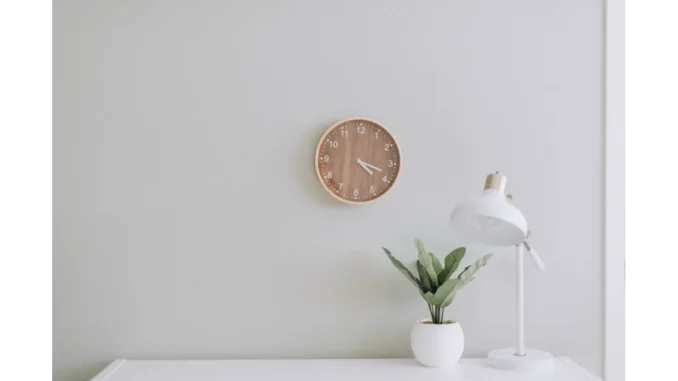
The Art of Layering Light: Illuminating Your Space with Elegance
Lighting stands as one of the pivotal elements of interior design, often underestimated yet profoundly impactful. Through thoughtful illumination, a space can be transformed, enhancing its functionality, mood, and aesthetic charm. One of the most sophisticated approaches to lighting is the art of layering different light sources. This method ensures that every room is not only well-lit but also versatile and visually captivating. In this article, we delve into the art of layered lighting, offering expert insights and actionable tips to elevate your home’s interior design.
Understanding Layered Lighting
Layered lighting involves integrating multiple types of light sources to craft a balanced and dynamic lighting scheme. The key components of this technique are:
-
Ambient Lighting: Serving as the foundational layer, ambient lighting provides overall illumination for the entire room, typically delivered through ceiling fixtures, recessed lights, or chandeliers.
-
Task Lighting: This focused lighting caters to specific activities such as reading, cooking, or working. Examples include desk lamps, under-cabinet lights, and pendant lights over kitchen islands.
-
Accent Lighting: Designed to highlight particular features or areas, accent lighting draws attention to artwork, architectural details, or decorative objects. Wall sconces, picture lights, and track lighting are common choices.
The Benefits of Layered Lighting
Layered lighting offers numerous advantages that can significantly enhance your home’s interior design:
-
Versatility: Multiple light sources enable you to adjust the lighting to suit various activities and moods. For instance, bright task lighting is ideal for cooking, while softer ambient lighting creates a cosy atmosphere for dining.
-
Depth and Dimension: The interplay of different lights adds depth and dimension to a room, making it more visually engaging and dynamic.
-
Highlighting Features: Accent lighting allows you to spotlight specific features or areas, bringing out the beauty of artwork, architectural elements, or decorative pieces.
-
Improved Functionality: Adequate task lighting reduces eye strain and enhances functionality for activities like reading or cooking.
Creating a Layered Lighting Scheme: A Step-by-Step Guide
-
Assess the Room: Begin by evaluating the room’s function, layout, and existing light sources to understand its lighting needs.
-
Plan Your Layers: Identify the types of lighting required. For example, a living room might need ambient lighting for general illumination, task lighting for reading, and accent lighting to highlight artwork.
-
Choose Your Fixtures: Select fixtures that align with the room’s style and function. Consider their size, shape, and placement to ensure they provide adequate light and complement the room’s design.
-
Install Dimmers: Dimmers offer greater control over lighting levels, allowing you to adjust brightness to suit different activities and moods.
-
Layer Your Lights: Combine various light sources to create a harmonious scheme. In a living room, you might pair ceiling fixtures with table lamps and wall sconces.
-
Test and Adjust: Evaluate your lighting scheme and make necessary adjustments to ensure each light source provides sufficient illumination and the overall scheme is balanced and cohesive.
Examples of Layered Lighting in Different Rooms
-
Living Room: Combine a chandelier for ambient lighting, table lamps for task lighting, and wall sconces for accent lighting. This approach ensures versatile and comprehensive illumination.
-
Kitchen: Use recessed lights for ambient lighting, under-cabinet lights for task lighting, and pendant lights over the island for accent lighting, creating a dynamic and practical space.
-
Bedroom: Implement a ceiling fixture for ambient lighting, bedside lamps for task lighting, and wall sconces for accent lighting, crafting a cosy and inviting ambiance.
-
Bathroom: Integrate recessed lights for ambient lighting, vanity lights for task lighting, and a pendant or chandelier for accent lighting, combining functionality with a touch of elegance.
Tips for Effective Layered Lighting
-
Mix Light Temperatures: Blend warm and cool light temperatures to create a balanced and welcoming atmosphere. Warm light works well for ambient lighting, while cool light is ideal for task lighting.
-
Consider Light Placement: Strategic placement of light fixtures ensures they provide adequate illumination and enhance the room’s design. Position task lighting where it is most needed, such as over a desk or kitchen counter.
-
Use Reflective Surfaces: Incorporate mirrors and glass to amplify the effect of your lighting scheme. Reflective surfaces can help bounce light around the room, creating a brighter and more dynamic space.
-
Add Layers Gradually: If unsure where to start, build your lighting scheme gradually. Begin with ambient lighting, then add task lighting, and finally incorporate accent lighting to achieve a balanced and cohesive result.
Bringing It All Together
Mastering the art of layered lighting can elevate any room, transforming it into a versatile, dynamic, and visually stunning space. By thoughtfully combining different light sources, you ensure that your living room, kitchen, bedroom, or bathroom is not only functionally illuminated but also aesthetically pleasing. Take the time to plan your lighting scheme, select the right fixtures, and enjoy the transformative power of layered lighting in your home.


Be the first to comment